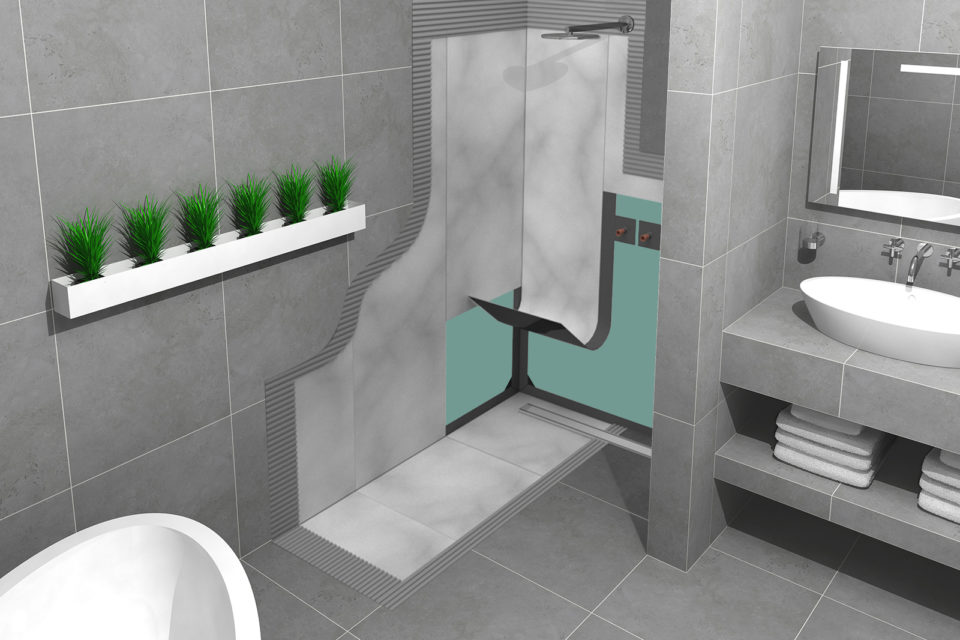Shower waterproofing is, in many ways, the immune system of your bathroom, an invisible guardian working silently to protect the structural integrity of your home from the relentless assault of water. As a physician, I have spent years studying how small, invisible threats can accumulate into catastrophic failures, how a single mutated cell can metastasize, how a microscopic pathogen can overwhelm an entire organism. The parallels between biological systems and building systems are striking. Both require robust defences at critical boundaries. Both fail when those defences are compromised. And both teach us that prevention remains infinitely superior to cure.
The Pathology of Water Damage
Water, that most essential molecule, becomes a destructive force when it breaches the boundaries we construct to contain it. Like a disease that begins asymptomatically, water infiltration often progresses silently for months or years before symptoms manifest. By the time you notice the telltale signs, the damage beneath the surface has often advanced considerably.
The Singapore Building and Construction Authority, recognizing this threat, mandates that “shower areas shall be provided with waterproofing treatment, including floors and walls up to a minimum height of 1800 millimetres, to prevent water seepage to adjacent areas.” This specification reflects an understanding that water, like an opportunistic infection, will exploit any weakness in our defences.
Anatomy of a Waterproofing System
To understand shower waterproofing is to understand a complex, multi-layered defence system not unlike the human skin. The waterproof membrane serves as the epidermis, the outermost barrier that repels water molecules. Beneath it lies the substrate, providing structural support. The tiles and grout above function like the stratum corneum, the visible protective layer that endures daily wear.
This system must maintain its integrity across several vulnerable features:
-
The shower base, where water pools and pressure accumulates
-
Wall junctions, where different planes meet and create stress points
-
Penetrations for tapware and showerheads, creating necessary breaches in the barrier
-
Floor waste outlets, requiring careful integration
-
Door thresholds and hob areas, critical transitional zones
The Natural History of Waterproofing Failure
Every waterproofing failure follows a predictable clinical course. Stage one involves the initial breach, often microscopic, invisible to casual inspection. Water begins its insidious migration through this opening, spreading laterally through porous materials much as cancer cells invade surrounding tissue.
Stage two sees the establishment of chronic moisture presence. The environment transforms, becoming hospitable to microbial colonization. Fungi, particularly species in the genera Aspergillus and Cladosporium, establish themselves with the efficiency of opportunistic pathogens. Their metabolic activities produce volatile organic compounds, the musty odour that signals established infection.
Stage three involves structural degradation. Timber frames rot, concrete spalls, steel corrodes. The building’s skeletal system begins to fail. This stage parallels the systemic complications of untreated disease, where initial local pathology spreads to compromise vital systems.
By stage four, the damage becomes clinically apparent. Ceiling stains appear like surface lesions. Tiles loosen. The floor yields underfoot. At this juncture, intervention becomes exponentially more complex and costly, much as treating advanced disease requires more aggressive approaches than addressing early-stage pathology.
Risk Factors and Predisposing Conditions
Certain environmental and structural factors increase the likelihood of shower waterproofing failure. Singapore’s tropical climate, with its sustained high humidity and temperature, creates conditions analogous to a warm, moist incubator. Buildings in this environment face constant challenge.
Poor initial installation represents the equivalent of a genetic predisposition to disease. If the waterproofing membrane was inadequately applied, insufficiently cured, or improperly detailed at critical junctions, the system begins life compromised. No amount of maintenance can fully compensate for these congenital defects.
Diagnostic Signs and Symptoms
The astute observer can detect waterproofing failure through careful examination:
-
Efflorescence, those white crystalline deposits that appear on tile surfaces, indicating salt migration through moisture pathways
-
Grout deterioration, the crumbling and discolouration that signals sustained moisture exposure
-
Hollow sounds when tapping tiles, suggesting delamination from the substrate
-
Persistent dampness on walls adjacent to the shower, evidence of lateral water migration
-
Ceiling stains in rooms below, indicating problems above
The Prophylactic Approach
In medicine, we have learned that the most effective interventions often occur before symptoms manifest. Vaccination prevents disease more efficiently than antibiotics treat infection. The same principle governs shower waterproofing.
Proper initial installation, using quality materials and adhering to established protocols, provides the foundation for long-term protection. The membrane must extend continuously across all surfaces, creating an unbroken barrier. Critical junctions require reinforcement, additional layers of protection at points of maximum vulnerability. Penetrations demand specialized detailing, ensuring that necessary breaches do not compromise the system’s overall integrity.
The membrane must cure fully before subsequent construction proceeds. Rushing this process invites complications. Patience during installation prevents problems during the system’s operational lifetime.
Conclusion: The Invisible Architecture of Safety
Throughout my career studying disease, I have developed profound respect for the invisible systems that maintain health. The immune system, working ceaselessly without conscious direction. The cellular repair mechanisms, constantly identifying and correcting errors. These systems, when functioning properly, require no acknowledgment. They simply work. Shower waterproofing operates similarly. When properly designed and installed, it protects silently, reliably, indefinitely. Its value becomes apparent only in its absence, when failure forces recognition of what was lost. The wisdom lies in understanding that investment in robust shower waterproofing represents not an expense but insurance against far greater future costs, both financial and structural.




